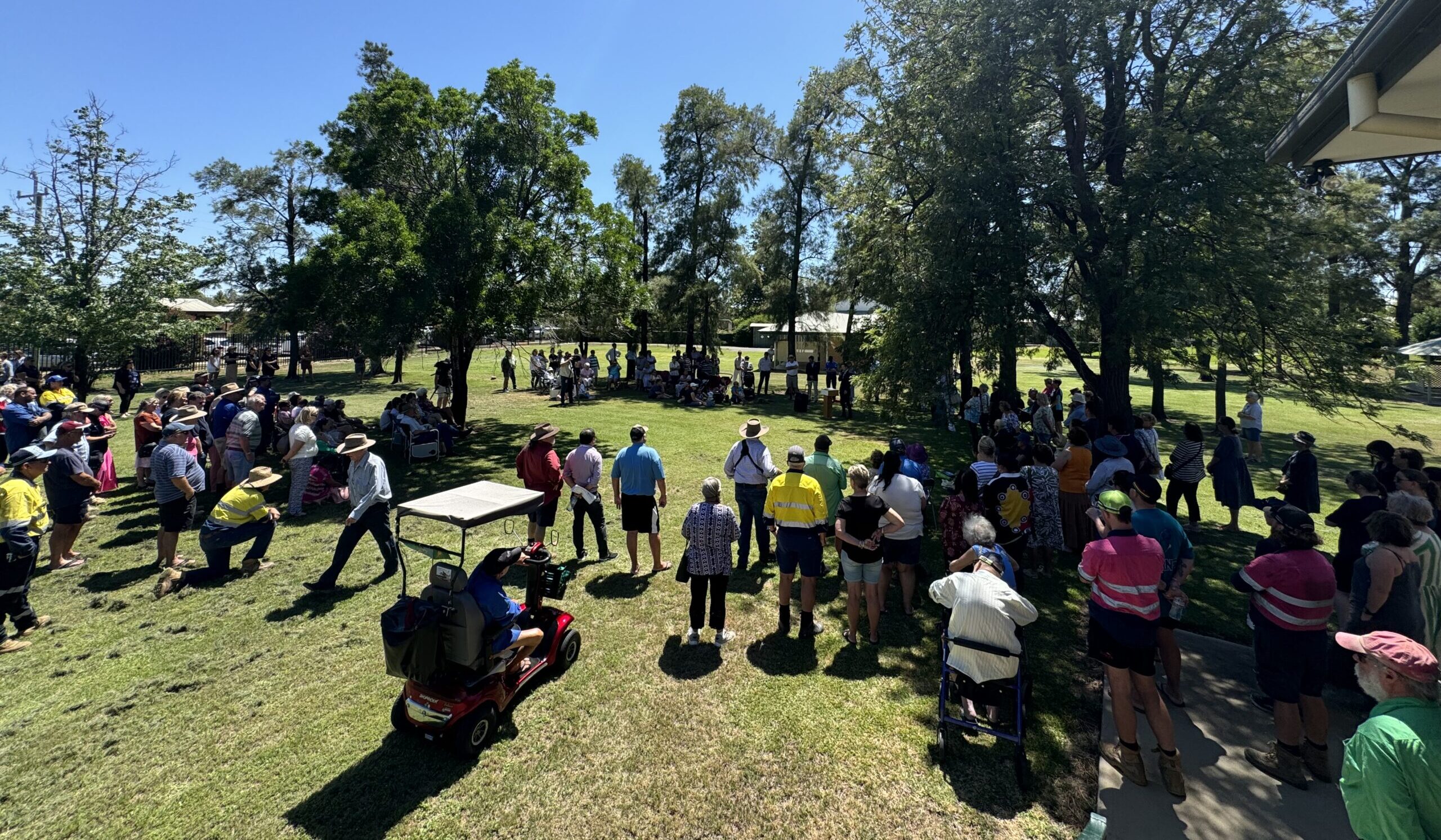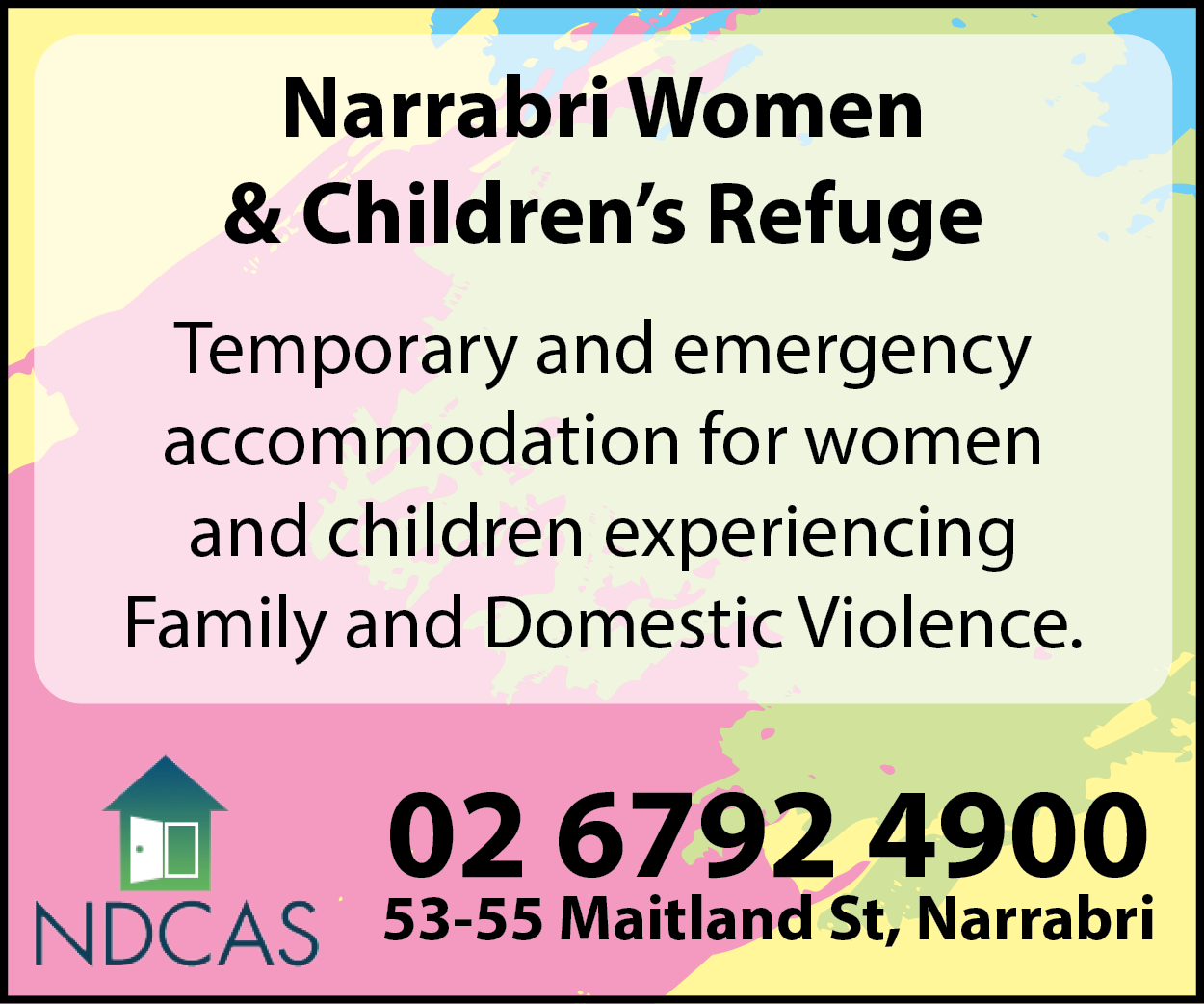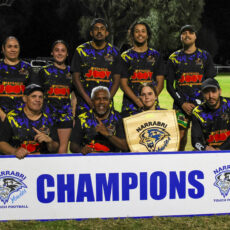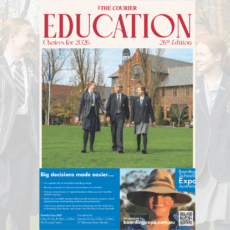As reported recently by The Courier, about 250 people attended the ‘Save our Wee Waa hospital’ rally recently, with many more signing a petition calling for action.
Fed up and frustrated, concerned community members organised the peaceful and informative protest in the hope ‘people power’ will make an impact and help keep the hospital’s doors open and lead to the long-awaited recruitment of a permanent doctor.
Narrabri Shire Council has declared it is standing firm with the Wee Waa community to “demand urgent action from Hunter New England Health and the NSW government to address the resourcing issues that are facing the Wee Waa Hospital.”
Urged to raise their voices, well-known and respected locals and representatives stood up to speak at the rally. Mustering up the courage to share their personal stories – heart-wrenching and terrible experiences – to hopefully make a difference and create enough noise to get Hunter New England Health and the NSW government to listen.
And it wasn’t just patients, but former staff too. High praise was given to the professionalism of local health staff, past and present, many of whom have been under an enormous amount of pressure.
It’s understood local member Roy Butler will meet with community members in Wee Waa this weekend to discuss the issue.
Below are copies of the presentations made by two Wee Waa residents – (semi) retired principal Peter Carrett and farmer Richard Schwager.
Peter Carrett
Good morning. I have been asked to speak as a person who has experienced the best our hospital has provided both recently and in the past. I came to Wee Waa in 1981 as a teacher. I married a local girl and we have raised our family here so I guess I have over 40 years of experience with the hospital to call upon.
In November 2022, I collapsed at school, and unable to walk was taken by ambulance to Wee Waa hospital. A doctor at the other end of a computer screen diagnosed back pain with painkillers and rest as the remedy. Because it was late in the day there was no thought to x-ray or scan my back. I was discharged and went home. Although this pain was the worst I have ever experienced it subsided in 24 hours. Minor pain in my back had been part of my life for a decade so I thought nothing more of it except that the pain never went totally away.
In June of this year, I was diagnosed with a malignant tumour in my back. During the week when I was diagnosed the severe pain returned early one morning and on a walking stick I went and saw Dr Siva (at the Wee Waa Medical Centre). He gave me a physical examination and knew immediately that it wasn’t an ordinary back pain. When I saw a specialist a fortnight later he said the tumour was slow growing and could have been growing for three years or more. I will always wonder about that pain in 2022.
Since June I have had an operation to remove the tumour along with one kidney and had chemotherapy to ensure the cancer was gone this means that I am on the mend and God willing will in the future be called a cancer survivor not a victim of cancer.
Just after my diagnosis I developed an infection which required intravenous antibiotics in a hospital. Here I discovered another aspect of what not having access to our local hospital meant. Sent over to Tamworth I sat in emergency for 7 seven hours before admission. Once the intravenous antibiotics started, I became a problem as they couldn’t send me back home to Wee Waa. I was taking up a bed in the overflow ward of a hospital already filled to capacity. So unable to send me back to Wee Waa hospital the decision was send me back to Narrabri hospital! Six days later a bed became vacant in Narrabri and I spent a further six days there. Again, a burden to that hospital because it was at capacity as well. I was at least amongst friends because taking up about half the beds in my ward were people from Wee Waa and each of the shifts of nurses contained girls I had taught in Wee Waa. Perhaps it was a way of making us feel welcome!
During my chemo treatment I have visited the emergency ward here twice. Twice I had problems develop at night and twice I waited until morning to attend the hospital rather than ring an ambulance. Both times I found the nurses so helpful and I received the treatment I needed for blood clots and severe abdominal pain. Twice I sat in front of a computer whilst a doctor who I had never seen before diagnosed my problem remotely. Both times I was sent onto Narrabri for further testing and referral back to my GP.
This is how treatment works now! You must have your own transport or ambulance cover and you must be prepared to travel as far as Newcastle for treatment. Since June I have clocked up over 4,000kms travelling for treatment.
It wasn’t always this way. Raising our family we had a hospital with two visiting local doctors. They looked after people here, not in Tamworth or Narrabri. They did small operations or set broken bones. They delivered children. Our four children were born in this hospital during the 1980s and 90s. In a maternity unit full of beds paid for by fund raising from the community. Remember when we used to do that sort of thing. At the other end of life we had a palliative care room. My father-in-law spent his last two weeks of life in the Wee Waa hospital in a room paid for again by fund raising from the community with his family and friends close by. Now people must spend their last days far from home making the trauma of loss worse as family spend days away from home in strange hospitals and where friends may not be able to visit.
My family are neither special or alone in all of this. My wife and I have 9 grandchildren now. Two were born in Tamworth after emergency trips over there from Wee Waa. Another grandson didn’t quite make it as far as Tamworth. He was born 15 kms this side of Narrabri on the side of the road. We live less than 400 metres from our hospital but couldn’t attend there.
Our government recently opened a new high school for our town at a cost of 37 million dollars but at a time when there are thousands of unfilled teaching positions across the state can they guarantee that in the future there will be enough teachers to teach our children or grandchildren if those teachers don’t have a hospital to support them should they need it? I recall one experienced Head Teacher in the 1980s who suffered an acute asthma attack whose life was saved in this hospital. He would not have made it to Narrabri.
I recall children who I taught whose lives have been saved because of the staff of this hospital. Burst appendix, severe cuts caused by falling through windows, snake bites, farm accidents. During my years as principal at Burren Junction I saw how important our local hospital is to our surrounding community. That extra 30 minutes to Narrabri will cost a life if it hasn’t already done so.
Closing this hospital will not just impact upon the town of Wee Waa but will also impact those people who live in Pilliga and Burren and on farms in between.
It will have a ripple effect on Narrabri and Tamworth hospitals as well. I have experienced that. I finish with one question. Would people living in NSW (Newcastle, Sydney and Wollongong) would they put up with loosing such an important part of community life as their local hospital? The answer is no they wouldn’t so why should we and why when we have doctors in town should our hospital be downgraded or closed?
Richard Schwager
In July of this year, one of my sisters attended the Wee Waa Medical Centre late in the afternoon with severe lower back pain – sciatica, which she had been experiencing for three weeks.
She had been given morphine about two weeks beforehand and this had worked well. It was, in fact, the only pain relief that worked at all for her.
My sister and her GP decided that a second injection of morphine would be in order, but as it was late in the afternoon, he wanted her to be monitored for the night in case of an adverse reaction. Obviously, this was not possible in the Wee Waa Hospital, as the hospital closed at 5.30pm. My sister was released into our care for the night. A little later she became very nauseous, with disorientation, pain and weakness. After several calls to Narrabri Hospital we finally called an ambulance and she was taken to the Narrabri Hospital Emergency Department. She was administered an anti-nausea drug in the ambulance.
On arrival we found the staff at Narrabri very busy. My sister was assessed and initially she was going to be admitted to hospital, until staff discovered there were no beds available. She was kept in Emergency for a couple of hours before an attempt was made to help her walk to our car but the return of all the symptoms meant she had to return to the Emergency Department. At around midnight another attempt was made to discharge her – this time she was taken in a wheelchair and, though she was very unwell, was able to get in the car and return to the care of a family member who lives in Narrabri.
It is not the treatment that was the problem, as staff were both professional and caring. This incident demonstrates two things:
1. The process of sending patients down the road to Narrabri simply overloads Narrabri Hospital making it difficult to treat anyone from either town.
2. With patients from Wee Waa who have little family support, what happens to them if they are taken to Narrabri by Ambulance and later discharged at say midnight with no vehicle, or accommodation. How do they get back to Wee Waa.
The facilities are in Wee Waa so let’s use them! If you were to walk through the empty corridors inside that building you would find lots of fully furnished rooms ready to receive patients. Much of the equipment was furnished by community fundraising now all too often it is locked up and we are locked out. Every time a decision is made regarding the Wee Waa area it involves a cutback. From water to medical facilities, it’s all the same, we must survive with less.
When I wrote this, I went on for another three pages about what is wrong with the medical services in the Wee Waa area but I threw it all in the bin as I realised I’m just tired! I’m tired of endless cutbacks. I’m tired of having to fight for everything. I’m tired of governments that don’t seem to listen. I’m tired of endless meetings where nothing ever seems to change. I’m tired of broken promises.
I can’t help but get the sense that the NSW government is in retreat in rural NSW because it is just too hard. Well, we live here, we know it gets hard. You only have to drive down the main street where the old NAB bank is being knocked down to see that it is tough.
But when it is all said and done, we really only have one message here today: We have given up enough.
Give us back our hospital! Give it back 24 hours a day, seven days a week, with access to a VMO.
To order photos from this page click here











Back in 2001 I was employed at Namoi Cotton. My home was in Tamworth and I stayed in a flat in Rose St during the week.
Late one evening I came down with a urinary tract infection. I walked to the hospital at abut midnight ( I was in too much pain and feeling sick to drive). The nursing sisters on duty provided treatment which lead to my recovery overnight. Later in the evening I walked back to my flat and had some sleep till morning.
If there was no hospital available I would have had the get an ambulance to Narrabri and after treatment there I would have no way to get back to Wee Waa.
KEEP THE 24 HOUR HOSPITAL SERVICE AVAILABLE!!